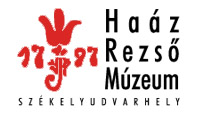Kovács Petronella (szerk.): Isis - Erdélyi magyar restaurátor füzetek 11. (Székelyudvarhely, 2011)
M-Kiss András: Egy elázott madágyűjtemény konzerválási problémái
for the protection of such works made in that period of great European prosperity was concluded as late as the early 1990s. Similarly to their medieval counterparts, recommendations proposed by the organisation Corpus Vitrearum International apply on these works of art. The study discusses the guidelines drawn up by Ernst Bacher, according to which, preserving structures, inbuilding methods, materials and techniques are of paramount importance and the preservation of the identity of the work of art is considered a basic requirement. In earlier times, restoration of architectural glass works was carried out by craft workers. Replacement of lead strips and broken glass was common, and no sufficient attention was paid to the use of suitable materials. Through case studies, the author introduces the work processes of architectural glass restoration and partial or total reconstruction as it is viewed today. Interventions must be preceded by comprehensive research work. The inbuilding structures and their technological problems are outside the glass restorer’s remit, but he is a consultant partner in any respect relevant to the preservation of the aesthetic values of the works of art and their survival in optimal technological condition. In case of listed works of art, the restorer needs permission from the competent authority to begin work based on previously submitted permission documentation. The restoration plan contains a detailed description of the procedure and the techniques to be applied. The work phases carried out are recorded in the restorer’s conservation report with detailed photo-documentation. On completion, the work is inspected by a joint jury of experts and representatives of the competent authority, and the restoration documentation is prepared which contains technological and aesthetic aspects of all interventions. Authentic and usable, this set of documents preserves facts that are to lend indispensable aid to future restoration work of the item in question. Eva Mester Glass artist, conservator 1082 Budapest, Nap u. 37. VI. 18. Mobile: +36-70-211-3297 E-mail: mester.eva.ll@gmail.hu Tihamér András The Restoration of the Owl Sign of the Teleki Library Designed by Károly Gulyás, the “Library Owl” was placed on the faţade of the Teleki Library in Marosvásárhely (now Târgu Mures, Rumania) during the reconstruction of the building in the 1920s, and has since become an emblem and symbol of the institution. Behind the wrought-iron library emblem, a wealth of Transylvanian intellectual heritage is preserved, which puts Marosvásárhely on a par with great West European intellectual centres. The first public library in Transylvania, it was established by Count Sámuel Teleki in 1802. The founder enriched the Teleki Library up to the end of his life; he purchased for it the most important scientific works, art albums and book rarities of his time, thus collecting altogether some 40 000 items. Significantly deteriorating both structurally and aesthetically, the sign of the institution was restored in 2009. Constructed from several separate pieces, the owl figure, perched on two books placed one on top of the other, is surrounded by an iron hoop decorated with wrought-iron leaves, and below it, a bent iron strip bears the inscription Bibliotheca Telekiana. The structure was fastened by cross-bars and welded at several points. It was repainted more than once over the times, in brown, green, or in Ceausescu era, black. The thick, multi-coated paint was cracked, revealing a thin corroded layer underneath. Water leaking into the hollow object caused serious damage. The book-shaped parts suffered major corrosion damage, with the iron sheet thinned or in places holed. No documentation on the original surface treatment of the owl is available, but according to non-official sources, it had not been painted at the beginning. For this reason, all coats of paint were removed from it in the course of restoration; all the more so because no layer that could have been established as homogeneous had been found during the examinations. Some pieces of the sign could be taken apart: the inscription sheet and the headgear of the owls were detached. This was followed by a mechanical cleaning, in the course of which a significant part of the cracked coats of paint was removed. Then high-pressure hot steam cleaning was applied and repeated several times, Since in some cracks and seams, paint had immovably set to the surface, alkaline cleaning was applied, then the remaining paint spots were again mechanically removed. After the alkali had been neutralised by hydrochloric acid solution, the corrosion damaged parts were chemically cleaned with R055 phosphatic rust solvent. This was followed by mechanical cleaning with iron brush and scalpel, and the treatment was repeated until the corroded layers were entirely removed; finally, the sign was given a distilled water and alcohol rinse. The material of the books, which had been shaped from thin iron plate, was corroded to a degree that they got holed and had to be repaired. The infilling, from epoxy resin reinforced with fibreglass, perform the double functions of stabilising the structure and insulating it by preventing water leaks. After completions and reinforcement, the owl and its constituting elements were given a rust prevention treatment with the water-based tannic solvent Fertan, by spraying the inner surfaces which were difficult to access. After 48 hours, the surface treatment was finally concluded by applying a coat of Kreidezeit rust protection paint mixed with powdered carbon, and after it had dried, WD-40 corrosion protection solvent was applied on the surface by painting and spraying. On the 195
